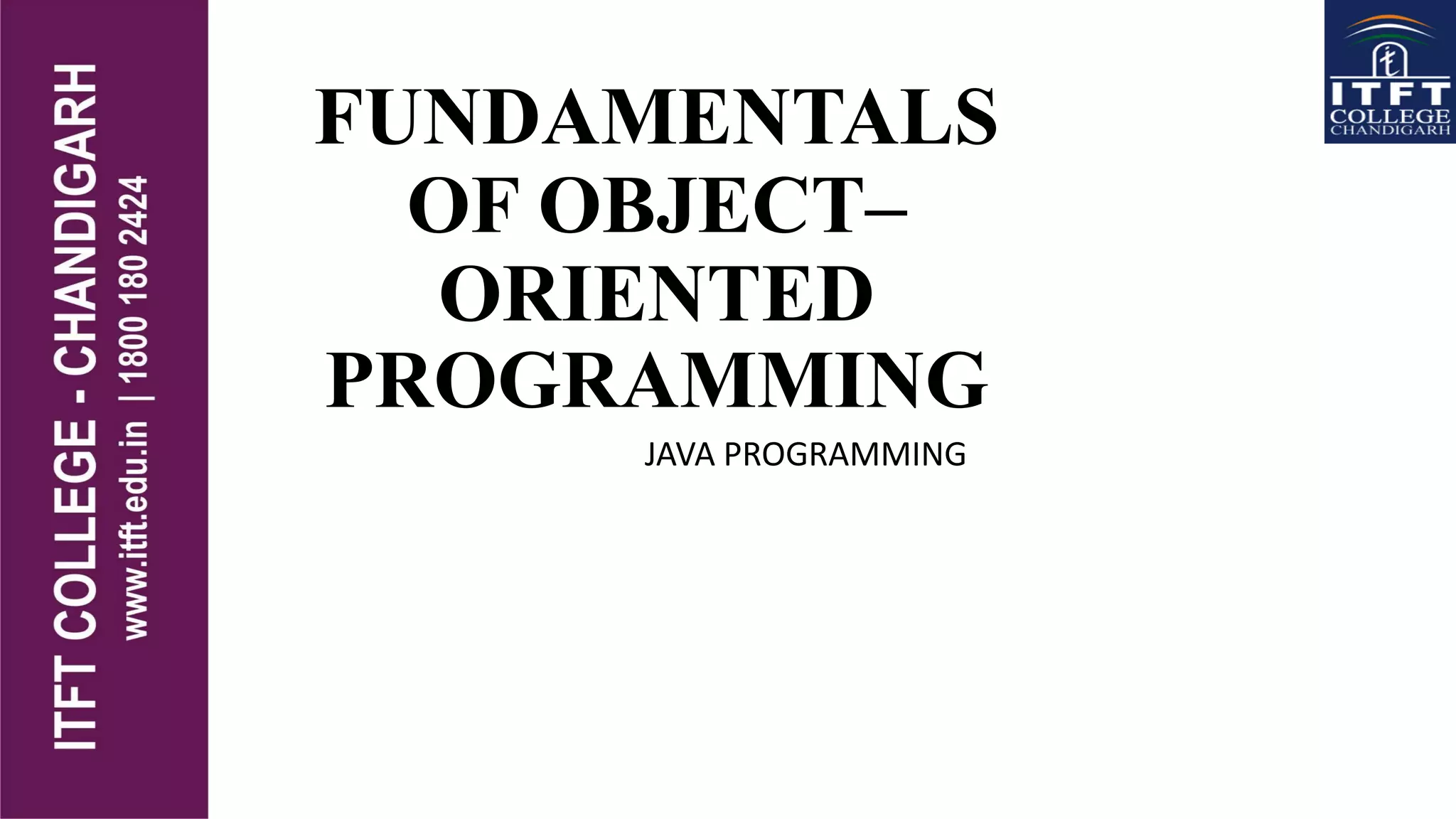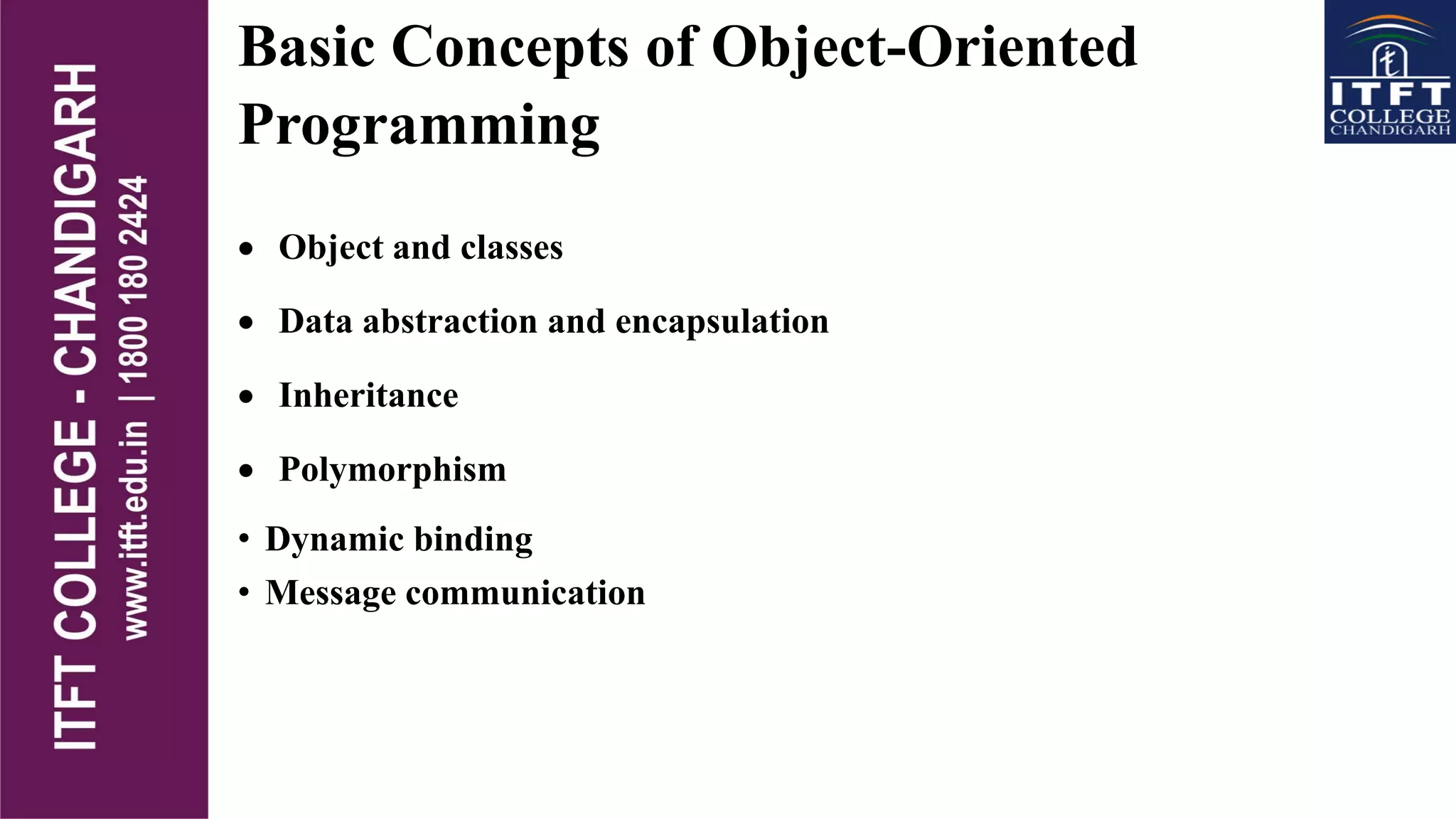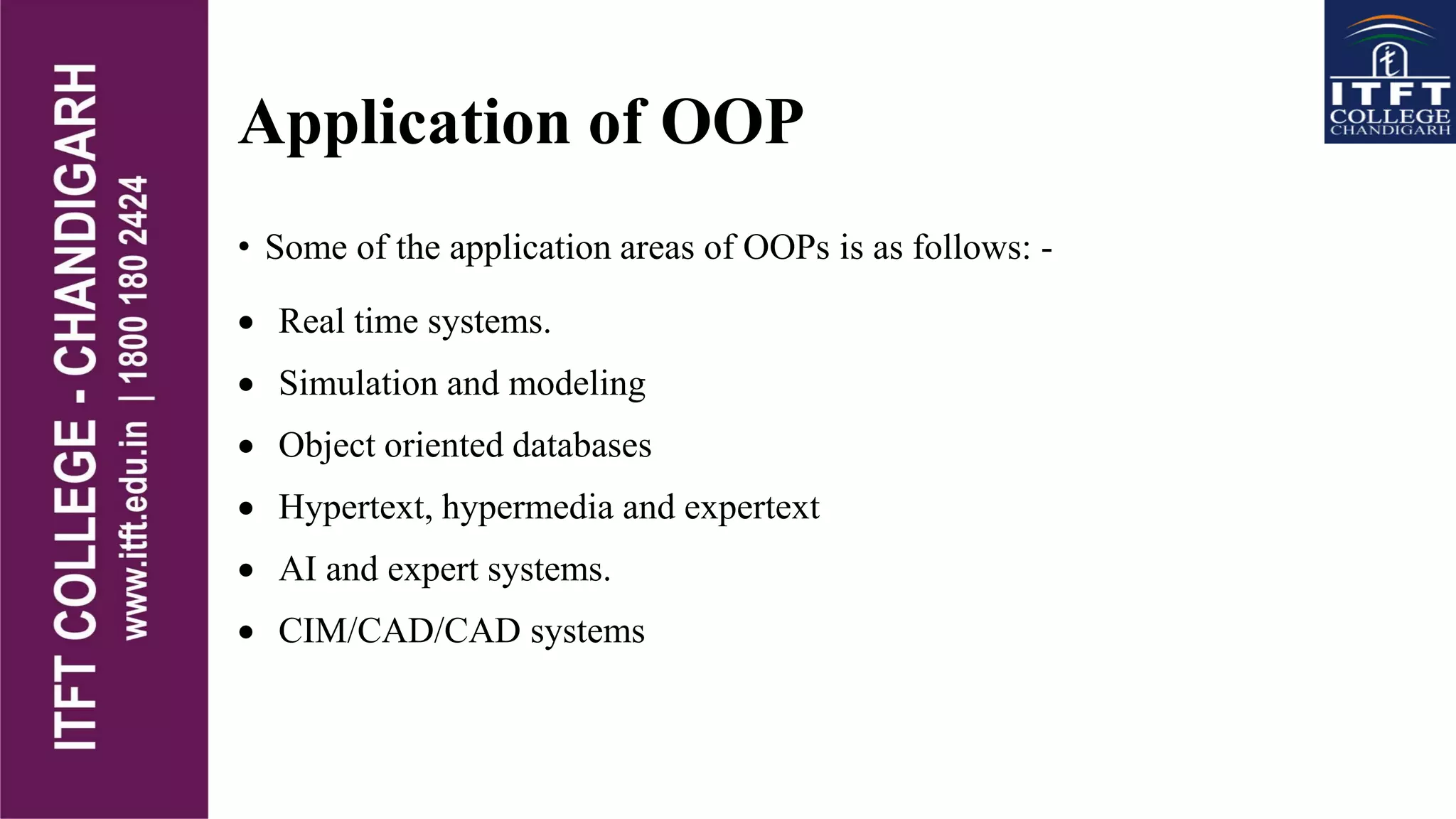Object-oriented programming (OOP) is a modular programming approach that focuses on data rather than procedures, using objects to encapsulate data and operations. Key concepts include classes, data abstraction, encapsulation, inheritance, polymorphism, and communication through methods. OOP offers benefits like manageable software complexity, easier upgrades, code reuse through inheritance, enhanced data security, and simplified interface descriptions.






